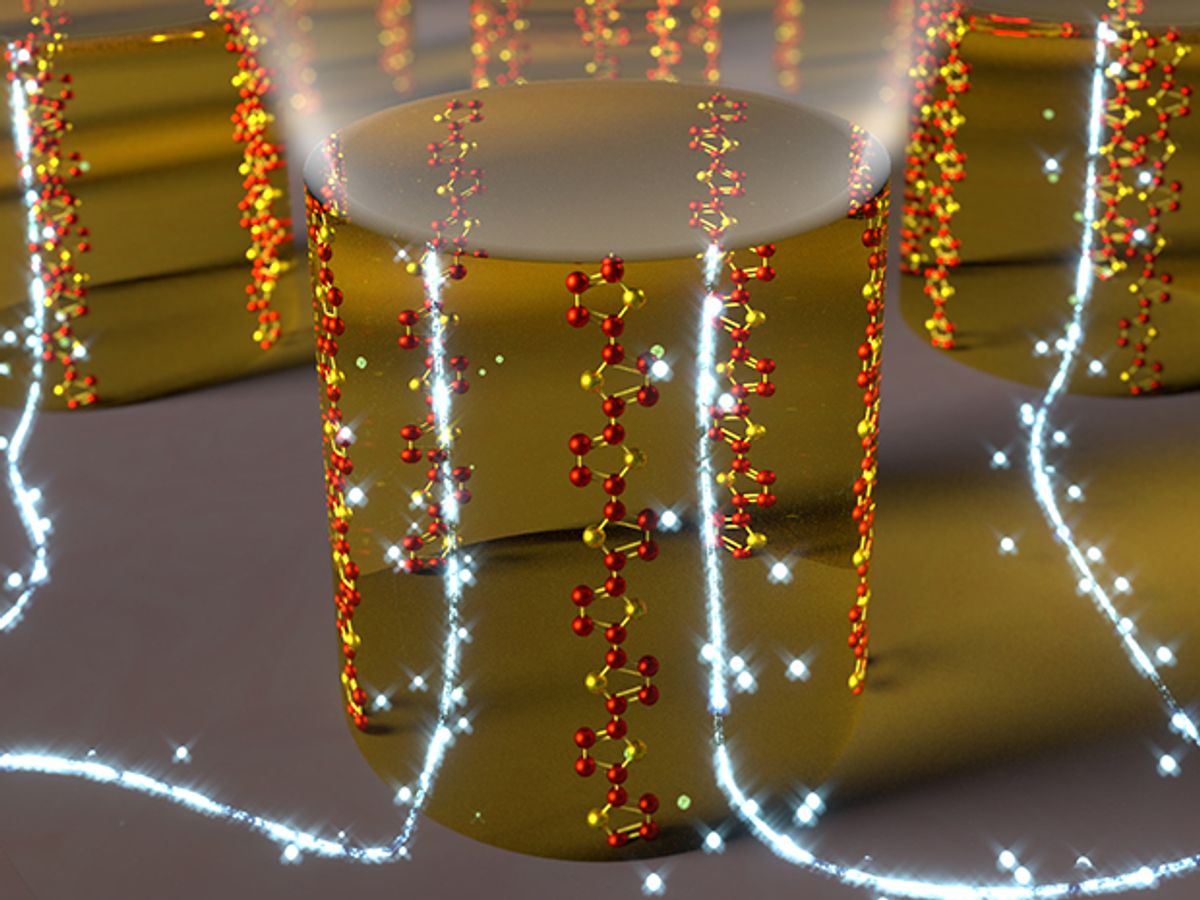One of the factors that has kept conjugated semiconducting polymers from being even more effective in applications such as organic photovoltaics (OPVs) and organic light-emitting diodes (OLEDs) is the materials’ poor charge carrier mobility. Basically, charge doesn’t move through plastic—even the conjugated variety—as well as it does through silicon. The result is high losses and poor performance.
Nanomaterials such as graphene have been offered up as additives to increase carrier mobility in polymers.
Now researchers at Umeå University in Sweden have developed a novel technique for improving the charge transport mobility of a polymer by more than a thousand times. The researchers were able to achieve this enormous increase without any doping of the polymer; instead, they controlled the orientation of the crystallite formations in the polymer.
The key to the research was thinking vertically. Because OPVs and OLEDs require charges to be transported vertically inside the polymer, many researchers have tried to control the orientation of the polymer chains so that they run in that direction. But heretofore, that level of control remained elusive.
In research described in the journal Advanced Materials, the Swedish research team developed a method that for the first time aligns the chains in the polymer so that electric charges can be efficiently transported along the chain backbone.
“The transport of electric charge is greatly enhanced solely by controlled chain and crystallite orientation inside the film,” said David Barbero, who led the research, in a press release. “The mobility measured was approximately one thousand times higher than previously reported in the same organic semiconductor.” Barbero added:
We believe these results will impact the fields of polymer solar cells and organic photodiodes, where the charges are transported vertically in the device. Organic-based devices have traditionally been slower and less efficient than inorganic ones (e.g. made of silicon), in part due to the low mobility of organic (plastic) semiconductors. Typically, plastic semiconductors, which are only semi-crystalline, have hole mobilities about 10,000 times lower than doped silicon, which is used in many electronic devices. Now we show it is possible to obtain much higher mobility, and much closer to that of silicon, by controlled vertical chain alignment, and without doping.
When one takes into account that charge carrier mobility in regular polymers is 10,000 times slower than in silicon, it’s clear that a thousand-fold increase in those speeds is not going to make up all the difference. But narrowing the gap to a single order of magnitude does make polymers a plausible—and certainly cheaper—alternative to silicon devices. When considered on a price-verus-performance basis, they might actually be competitive in the marketplace depending on the application.
Dexter Johnson is a contributing editor at IEEE Spectrum, with a focus on nanotechnology.



